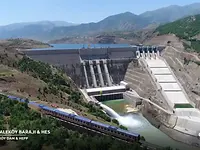Although Turkey is largely dependent on oil and gas imports, it is blessed with significant hydropower resources. Hydropower generation represents a share of more than 30% of the total installed capacity that, as of 2018, has reached 85,200 MW. Of this total, thermal capacity of 46,927 MW represents 53% and renewables including hydro of 40,513 MW accounting for 47%. Hydro itself has an installed base of about 27,273 MW, a share of 68% of all renewable energy sources and 32% of the national installed capacity.
The increase in energy consumption in Turkey is picking up pace and in addition to conventional power generation, renewable sources such as wind and solar power plants are intended to be built on a large scale. Due to Turkey’s high import dependency for its primary energy, the Government has been encouraging the use of renewable resources.
With more variable renewable capacity anticipated over the coming years, the need for flexible generation capacity will also increase. Technologies able to balance and store energy – like pumped storage hydropower stations – will become far more important. No pumped storage projects have been executed in Turkey to date, but their capabilities will definitely be necessary to solve these growing energy supply and demand issues.
The coming decade (2020–2030) is crucial for the development of flexible generation, given the expected strong growth in electricity prices – driven by a tighter supply/demand-balance, increasing gas prices and additional contributions from carbon emission costs.
Turkish generation capacity is expected to almost double between now and 2040, with solar PV experiencing the fastest growth rates and onshore wind the biggest absolute increases. Together they are set to cover about one third of total national capacity in 2040. Meanwhile, hydropower capacity is going to grow by about 30% over the same period to add about 8,000 MW, excluding pumped storage.







